Rec Sports
An NFL player was against ‘shrink dudes.’ Then he started working with one
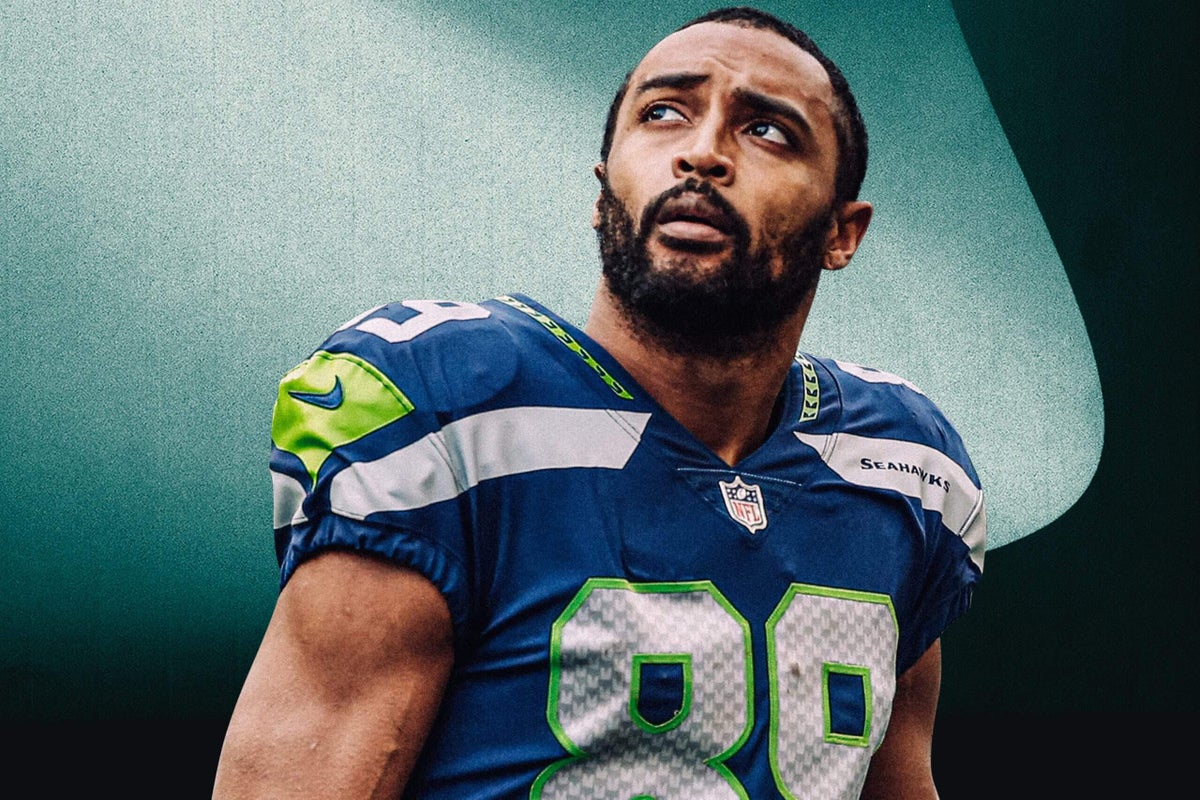
Editor’s note: This story is a part of Peak, The Athletic’s desk covering leadership, personal development and success through the lens of sports. Follow Peak here.
When Doug Baldwin first met the sports psychologist who would have a profound impact on his life, he was skeptical about working with him.
“Skeptical is kind of a nice way of putting it,” Baldwin said. “I was against it.”
It was 2011, and Baldwin had just joined the Seattle Seahawks as an undrafted rookie. The draft snub fed his intensity and insecurities. For years, he had used the feeling that he wasn’t good enough to prove that he was. That combination had helped him reach the pros, going from an unheralded two-star prospect out of high school to Stanford’s leading receiver as a senior. When he made a mistake, he dwelt on it and used it to knock his self-worth, prompting him to work even harder.
Only later, as he learned how to frame and consider his internal thoughts, did he truly understand the personal costs of that mindset.
So when Baldwin met Dr. Michael Gervais, a sports psychologist that Seahawks coach Pete Carroll had brought in to work with players, he wasn’t sold. Baldwin believed the way he had always carried himself was what made him a successful football player. And when Gervais walked in with his fluffy hair, polished style and frequent smile, Baldwin thought he looked like a Tom Cruise clone.
A teammate in Seattle, running back Marshawn Lynch, had a name for people like Gervais: “shrink dudes.”
Yet when Gervais explained the intent of his work — to unlock the best versions of players through training their minds — and the goals it could help them achieve, Baldwin decided to give him a shot.
If this is what he says it is, Baldwin thought, then why not just try it?
For Gervais, that initial meeting came as he was returning to the sports world after his first attempt to work with athletes a decade earlier had frustrated him.
He had earned a Ph.D in sports psychology with the belief that all athletes could benefit from his work. But he became deflated when he felt like some of his athletes didn’t fully believe in the correlation between mental skills training and performance, and even more so when they didn’t match his investment.
So instead, he spent time at Microsoft, helping high-performers develop mental skills and playing a crucial role in the Red Bull Stratos project, where he counseled Felix Baumgartner before his record-setting skydive from 128,000 feet.
In 2011, Gervais had dinner with Carroll before his second season as the Seahawks’ head coach. Carroll explained that he was looking to instill a culture built around training players’ minds as much as their bodies, and he assured Gervais it would be different from his previous experiences. So Gervais decided to give pro sports another chance.
The first time Gervais worked with Baldwin was during a group session about basic breathing exercises. He started the session with box breathing. Baldwin and his teammates inhaled for five seconds, paused at the top for five seconds, exhaled for five seconds, then paused at the bottom for five seconds before breathing in again.
Next, they switched to down-regulation breathing: inhaling for eight seconds, pausing, exhaling for 16 seconds, then pausing again.
Before the session finished, Gervais asked the group to participate in a “gratitude meditation.”
“It’s completely attuning to one thing you’re grateful for,” Gervais said.
Afterward, as Gervais exchanged goodbyes with players, Baldwin slowly made his way to the front of the room. Gervais wasn’t sure what Baldwin was going to say. When they were face to face, Baldwin just stood there, grinning and nodding his head up and down.
“OK,” Baldwin finally said. “Yep. OK.”
Gervais didn’t have to say anything back.
“I knew and he knew what that stood for,” Gervais said. “OK, I just went somewhere. I just felt something.”

Baldwin was never the biggest or fastest receiver, but he was always one of the most prepared players on the Seahawks. (Abbie Parr / Getty Images)
Baldwin’s work with Gervais came at a time when athletes across sports started to more publicly consider their mental health and how it influenced their performance. Baldwin felt the stigma against showing signs of vulnerability. However, the revolution has continued and has changed how athletes discuss their struggles, with many more publicly acknowledging the ways they are seeking help.
“Being able to do that opened up a whole different realm for me,” Baldwin said.
The first breath-work session had been a “gate opener,” the first time that he felt like he could control his intense emotions.
“My body had never felt that type of stillness and that type of relaxation,” he said.
Still, Baldwin’s skepticism didn’t vanish overnight. Gervais chipped away at it by painting a picture. As thoughts came into his mind, Gervais suggested viewing them as clouds: Just like a cloud, the thought is here right now, but it’s simply passing through the sky. Just because a thought existed didn’t mean Baldwin needed to have judgment of it. It’s not a bad thought or a good thought. It’s just a thought. And it floats by just as a cloud does.
He also connected with Baldwin on a personal level. It wasn’t unusual for their check-ins to turn into hours-long conversations, or for shared meals in the lunchroom to extend into a long walk-and-talk session to practice.
“It was basically counseling sessions,” Baldwin said. “It was about finding a deeper understanding of myself and what I’m capable of.”
Gervais helped Baldwin understand his intense emotions and energy with an analogy: “It’s like you’re trying to dictate which way a herd of mustangs is going. You’re not going to be able to do that. What you can try to do is try to guide them in the general direction that you want to go.”
Baldwin gained a deeper understanding of himself and his thought processes. Conversations with Gervais helped Baldwin connect many aspects of his mindset to the difficulties of his childhood and his insecurities, which gave him the awareness to make adjustments. By getting to the source and working to improve his thoughts, he began to see his relationships and life off the field improve as well.
Baldwin began breath work twice a day, and the physical and mental benefits surprised him. He could stay calm under pressure moments on the football field, but he also felt more peaceful and relaxed in his regular life.
Gervais helped him establish a pre-performance routine, a pregame routine and a pre-snap routine. Most importantly, from Gervais’ perspective, each part of every routine put Baldwin in control. Baldwin could not control scoring touchdowns, for example, but he could control the way he caught the ball or moved his feet.
This, Gervais explained, allowed Baldwin to “put himself in the best position to be himself.”
The purpose was to master how to stay calm under stress, generate confidence, envision performance excellence, let go of mistakes and be a better teammate.
“Thoughts drive actions,” Gervais said. “Thoughts impact emotions. Thoughts and emotions together impact behavior. And thoughts, emotions and behavior stacked up is what creates performance.”
Baldwin incorporated visualization into his routine. He would imagine himself making specific plays to convince his mind that the moment had already happened — another way to give himself a sense of control.
Baldwin’s insecurity-fueled drive didn’t disappear. He was always one of the Seahawks’ most prepared players. He studied film for hours and prioritized going into games, confident that he had done everything to give himself the best chance to be successful.
Still …
“No matter how hard you prepare,” Baldwin said, “there’s always something that comes up that you weren’t prepared for or makes you question your preparation.”
That’s where the work with Gervais kicked in.
During a big playoff game, Baldwin’s heart pounded so rapidly that he began to feel anxious.
“Just get grounded,” he told himself. “Get grounded.”
As he pressed his thumbs to each of his fingertips, he continued to take deep breaths, reminding himself of where he was and the techniques he had learned from Gervais.
“I’m in control of my body, I’m connected to it,” he recited.
Then the game started and Baldwin began to feel like himself. His training with Gervais didn’t always yield immediate results.
In 2016, when the Seahawks played the Green Bay Packers, Baldwin struggled. Nothing he tried was successful. He couldn’t bring himself to be balanced and grounded. But he didn’t give up.
“It’s consistency and discipline with it, but then also persevering through those times where it may feel like it’s not working,” he said. That paid off in a major way that year, when he had the most catches and most receiving yards of his career and made his first Pro Bowl.
“It’s somewhat similar to a muscle,” Baldwin said. “You have to work it out in order to strengthen it, and there are going to be times where it fails because that’s the only way that it grows and gets stronger.”
After big games that season, he sat on the sideline and thought: Damn. He didn’t feel tired; everything felt effortless.
As his work with Gervais continued, Baldwin noticed changes off the field. He felt more confident and reliable as a friend, husband, brother and son.
Baldwin retired at 30 after the 2018 season. He wanted to ensure that the adverse side effects of his many years playing football did not interfere with his kids and family. He and his wife, Tara, have three daughters, and he feeds his competitive side with pickup basketball games.
Without football, he finds himself occasionally tempted to fall back into old habits because deep down they still feel safer to him, and more familiar. But he still relies on the blueprint Gervais gave him years ago to catch himself.
On his phone, he has one of Gervais’ guided meditation recordings. When he wakes up some mornings, he does breathing exercises and visualizes how his day is going to go — the same tools he used to catch passes and score touchdowns.
“And that’s been profound in my life,” Baldwin said.
Elise Devlin is a writer for Peak. She last wrote about the best ways to coach youth sports. Follow Peak here.
(Illustration: Dan Goldfarb / The Athletic; Otto Greule Jr / Getty Images)
Rec Sports
What The University of Utah’s $500M Private Equity Deal Means for the Future of Youth Sports
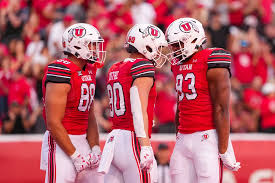
The University of Utah made history this week by becoming the first major college athletic program to partner with a private equity firm. The unanimous vote by the school’s board of trustees on December 10, 2025, approved a groundbreaking agreement with New York-based Otro Capital that could generate up to $500 million in capital.
The deal represents a significant evolution in college sports financing, one that will be closely watched across the industry. For the millions of families investing in youth sports as a pathway to college scholarships, understanding this shift matters. The model Utah is testing could reshape how college athletics programs are funded and operated nationwide.
The Deal Structure
The University of Utah will create a new for-profit entity called Utah Brands & Entertainment LLC to manage the commercial side of its athletic department. This includes ticket sales, corporate sponsorships, media rights, licensing, hospitality and other revenue-generating operations.
Otro Capital will take a minority ownership stake in exchange for a significant capital infusion, with the university maintaining majority control through its Growth Capital Partners Foundation. Athletic Director Mark Harlan will chair the board of the new entity, which will be led by an external president overseeing day-to-day operations.
The university retains control over athletic decisions including coaching hires, scheduling and student-athlete welfare. The deal includes an exit strategy allowing Utah to repurchase Otro’s stake after five to seven years.
Otro Capital was founded in 2023 by former RedBird Capital Partners executives, including Alec Scheiner, who previously served as president of the Cleveland Browns and senior vice president of the Dallas Cowboys. The firm was also instrumental in creating Legends Hospitality, a major player in stadium operations and sports venue management.
Why This Happened Now
The timing of this deal reflects the financial pressure facing college athletic departments nationwide. The House v. NCAA settlement now allows schools to pay student-athletes up to $20.5 million annually, with that figure increasing 4% each year over the next decade.
Utah athletics reported a $17 million deficit in fiscal year 2024, spending $126.8 million against $109.8 million in revenue. While the football program generated a $26.8 million profit and men’s basketball added $2.6 million, the remaining 17 sports programs lost $21.2 million combined.
Similar deficits exist across college sports. Ohio State, despite generating $254.9 million in revenue, ran a $37.7 million deficit. Colorado projected a $27 million shortfall. The traditional funding model of donor contributions and ticket sales is no longer sufficient to cover rising costs.
The Olympic Sports Question
The relationship between college athletics and Olympic sports development presents both opportunity and uncertainty under this new model. Olympic sports programs including swimming, diving, gymnastics, wrestling, track and field, and others represent the primary development pathway for American Olympic athletes.
Data from the U.S. Olympic and Paralympic Committee shows that 88% of American summer Olympians at the 2016 Rio Games competed in college. Over 70% of U.S. Olympic swimmers since 2000 came through collegiate programs. For winter sports at the 2018 PyeongChang Olympics, one-third of Team USA members were former college athletes.
Private equity firms typically focus on profitability and return on investment. The business-oriented decision making this brings could take several directions. Operational efficiencies and revenue optimization might generate resources to support a broader range of sports. Alternatively, pressure to maximize returns could lead to resource reallocation away from non-revenue programs.
The University of Utah has explicitly committed to maintaining its Olympic sports programs. President Taylor Randall stated the deal will help grow women’s and Olympic sports. The structure keeps athletic decisions including program offerings under university control rather than investor authority.
The question for youth sports stakeholders is whether improved revenue generation can sustain more comprehensive athletic programs, or whether profit pressure will eventually impact program offerings despite current commitments.
The Youth Sports Pipeline Connection
Changes to college Olympic sports programs would directly impact youth sports participation and development. College scholarships serve as a significant motivator for families investing time and money into youth sports training.
Research from the Aspen Institute shows that roughly 20% of youth sports parents believe their child has the ability to play Division I college sports. This belief influences enrollment decisions in travel programs, specialized training and development academies.
The impact on youth sports could unfold in several ways:
If college programs expand or improve through better revenue generation, more scholarship opportunities could increase youth participation in Olympic sports. Enhanced facilities and resources at the college level might strengthen the entire development pipeline.
Conversely, if college opportunities diminish, youth participation could be affected as families reassess their investments. Swimming, wrestling and gymnastics programs at the youth level rely heavily on the college pathway as a development goal.
Greg Earhart of the College Swimming and Diving Coaches Association noted in Sports Illustrated that changes to college programs create downstream effects. When parents make decisions about youth sports enrollment, news about college program changes factors into their calculus.
COVID demonstrated the interdependence between college and youth sports. When NCAA facilities closed to youth programs, junior diving programs that had been developing future Olympians lost access to facilities. Some coaches transitioned to college positions for stability. Four years later, some markets still face gaps in availability and coaching capacity.
Private Equity Already in Youth Sports
The entry of private equity into college sports parallels a trend already underway in youth sports. Over the past three years, Apollo Global Management co-founder Josh Harris and Blackstone executive David Blitzer have used their family foundations to acquire youth sports properties through a company called Unrivaled Sports.
Private equity involvement in youth sports brings both professional management and business pressure. Improved facilities, better marketing and operational efficiency can enhance the participant experience. The capital these firms provide enables facility upgrades and expansion that individual operators might not afford.
The concern among some advocates centers on accessibility. Higher facility fees, tournament costs and program expenses could accelerate economic stratification in youth sports. The counterargument is that professional management and economies of scale might actually improve efficiency and cost structure over time.
What Makes Utah Different
Several factors enabled Utah to move forward where other schools and conferences have stalled. The Big Ten explored a $2.4 billion private investment proposal with UC Investments last month, but the deal faced opposition from Michigan and USC. The complexity of getting 18 member schools to agree proved challenging.
Utah’s board of trustees has only 10 members, streamlining the negotiation and approval process. The school also took a more transparent approach, with President Randall and AD Harlan publishing an 800-word letter explaining their rationale on the same day as the board vote.
The university structured the deal to maintain control over athletic operations while partnering with Otro on the commercial revenue side. This separation allowed Utah to access private capital and operational expertise without ceding decision-making authority over sports programs.
Legislative Response and Legal Questions
The deal generated immediate response from lawmakers at both state and federal levels. Representative Michael Baumgartner of Washington posted on social media that Congress would examine the tax-exempt status of universities entering private equity deals. Earlier this year, he introduced the PROTECT Act, legislation aimed at blocking private equity deals with athletic departments or conferences.
Utah state senators Daniel McCay and Nate Blouin expressed concerns publicly. Representatives Brendan Boyle and Lori Trahan also questioned the approach on social media.
Legal experts have varied perspectives on the implications. David Gringer, a partner at WilmerHale specializing in antitrust issues in higher education, told Front Office Sports that treating private equity as a “boogeyman” is misguided. He noted that LLC structures have been used by other schools like Kentucky, Michigan State and Clemson, albeit without private equity involvement, and provide clear benefits including dedicated funding sources and operational flexibility.
Frank Azzopardi, a partner at Davis Polk, expressed surprise at Utah creating a for-profit entity during the SBJ Intercollegiate Athletics Forum, citing potential implications for the university’s 501(c)(3) tax status.
Gringer countered that threats to strip tax-exempt status are unnecessarily inflammatory, calling it “absurd” to penalize a school’s overall tax status based on a standalone entity with private equity investment.
The legal and regulatory framework for these partnerships remains unsettled, creating uncertainty for other institutions considering similar approaches.
What Youth Sports Leaders Should Watch
For those operating youth sports organizations, several aspects of the Utah deal offer learning opportunities:
Program Sustainability: Track whether Utah maintains or expands funding and roster sizes for Olympic sports programs. Positive outcomes would validate the model, while program reductions would signal potential risks across college athletics.
Operational Excellence: Otro brings expertise in ticketing, sponsorships, licensing and hospitality that college programs have traditionally handled internally. Youth sports organizations may identify similar opportunities to professionalize revenue operations and improve business performance.
Donor Equity Participation: Utah offered major donors the opportunity to purchase stakes in the new entity. This model combines traditional philanthropy with investment returns, potentially providing a blueprint for youth sports organizations seeking capital while maintaining operational control.
Revenue-Generating Innovation: The partnership aims to identify new revenue streams through professional sports expertise. Successful innovations at the college level could be adapted for youth sports contexts.
Five to Seven Year Timeline: The deal includes an exit strategy after five to seven years. This timeframe will reveal whether private equity partnership can genuinely improve financial sustainability or if it merely delays difficult decisions. The performance metrics and outcomes over this period will be instructive.
The Broader Trend
Utah’s deal is positioned as a first mover rather than an outlier. Industry executives told Front Office Sports they expect more deals to be announced over the next 12 to 24 months, though likely at a measured pace rather than rapid adoption.
Ben Fund, a partner at Carlyle Group, noted that private equity firms are actively interested in college sports opportunities. Chuck Baker, co-chair of Sidley Austin’s entertainment, sports and media practice, said the main question among both private equity and university clients is whether this will accelerate similar deals elsewhere.
Several schools including Kentucky, Michigan State and Clemson have created similar for-profit entities for revenue generation, though none have partnered directly with private equity firms. These structures provide existing models for separating commercial operations while maintaining university control over athletic decisions.
The difference with Utah is the capital partner. Otro brings both immediate funding and operational expertise from professional sports. Whether this combination delivers better outcomes than university-managed entities will influence how other schools approach their financial challenges.
The Youth Sports Impact
The impact on youth sports depends on how private equity-backed college programs balance financial performance with program breadth. Several scenarios are possible:
Enhanced revenue generation could strengthen college programs across all sports, improving scholarship opportunities and facility quality. Better business operations might create efficiencies that support rather than threaten Olympic sports.
Alternatively, sustained pressure for returns could lead to difficult decisions about program offerings despite current commitments. The five to seven year timeline before exit strategies take effect will be telling.
The Los Angeles 2028 Olympic Games adds relevance to this question. With international competition on American soil, the strength of college programs producing Olympic athletes will be on display.
For youth sports families making long-term investment decisions about their children’s athletic futures, the Utah deal represents a model worth understanding. The answers emerging over the next several years will inform whether similar structures spread across college athletics.
The deal closes in 2026, when Utah Brands & Entertainment begins operations. Whether private equity partnership proves to be an effective solution for college sports sustainability, and what that means for youth sports pathways, will become clearer as results emerge.
The seal has been broken. Private equity has officially entered college sports. How this influences youth sports development will be determined by the execution of this first major partnership.
Legal Disclaimer:
YSBR provides this content on an “as is” basis without any warranties, express or implied. We do not assume responsibility for the accuracy, completeness, legality, reliability, or use of the information, including any images, videos, or licenses associated with this article. For any concerns, including copyright issues or complaints, please contact YSBR directly.
Sources
Photo: UtahUtes.com
Primary Reporting:
- Dellenger, Ross. “Sources: University of Utah nearing landmark private equity deal expected to generate $500 million.” Yahoo Sports, December 9, 2025.
- Horney, Ben. “The Private Equity ‘Boogeyman’ Shows Up at Utah.” Front Office Sports, December 12, 2025.
- Axios. “Private equity makes its first college sports play.” December 10, 2025.
University of Utah Coverage:
- The Salt Lake Tribune. “University of Utah nears private equity deal to fund athletics department with Otro Capital.” December 9, 2025.
- The Salt Lake Tribune. “How might private equity’s deal with the University of Utah turn gold? How might it turn sour?” December 10, 2025.
- Deseret News. “University of Utah proposes private equity deal to fund athletics.” December 9, 2025.
- KSL Sports. “University of Utah Announces Landmark Private Equity Deal.” December 9, 2025.
Financial and Industry Analysis:
- Bloomberg. “Private Equity Firm Otro Wins College Sports Deal With University of Utah.” December 10, 2025.
- Wetzel, Dan. “Beware, college sports, private equity has arrived.” ESPN, December 2025.
- Business of College Sports. “Is Private Investment on the Way Into College Sports or Getting Banned?” 2025.
Olympic Sports Pipeline:
- Sports Destination Management. “As Colleges Cut Teams, USA Loses Prospective Olympians.” 2020.
- Bloomberg. “America Is an Olympic Powerhouse, College Sports Rules Could End It.” September 4, 2025.
- SwimSwam. “Now Is the Time: A Call to Protect Collegiate Olympic Sports.” 2025.
- Epstein, David. “Why America’s Olympic Pipeline Might Start Leaking.” The Range, 2025.
- AInvest. “The Shifting Financial Dynamics of College Sports and Its Impact on U.S. Olympic Dominance.” 2025.
Private Equity in Youth Sports:
- The New York Times. “Youth Sports Are a $40 Billion Business. Private Equity Is Taking Notice.” 2025.
- NPR. “When private equity invests in youth sports facilities.” November 25, 2025.
- Vice. “Is This the End of Youth Sports?” 2025.
Additional Context:
- Sports Business Journal. “The NCAA settlement puts Olympic and non-revenue sports on the brink.” June 30, 2025.
- El-Balad.com. “Otro Capital to back University of Utah in college sports’ first private-equity partnership, aiming to raise $500 million.” December 9, 2025.
About Youth Sports Business Report
Youth Sports Business Report is the largest and most trusted source for youth sports industry news, insights, and analysis covering the $54 billion youth sports market. Trusted by over 50,000 followers including industry executives, investors, youth sports parents and sports business professionals, we are the premier destination for comprehensive youth sports business intelligence.
Our core mission: Make Youth Sports Better. As the leading authority in youth sports business reporting, we deliver unparalleled coverage of sports business trends, youth athletics, and emerging opportunities across the youth sports ecosystem.
Our expert editorial team provides authoritative, in-depth reporting on key youth sports industry verticals including:
- Sports sponsorship and institutional capital (Private Equity, Venture Capital)
- Youth Sports events and tournament management
- NIL (Name, Image, Likeness) developments and compliance
- Youth sports coaching and sports recruitment strategies
- Sports technology and data analytics innovation
- Youth sports facilities development and management
- Sports content creation and digital media monetization
Whether you’re a sports industry executive, institutional investor, youth sports parent, coach, or sports business enthusiast, Youth Sports Business Report is your most reliable source for the actionable sports business insights you need to stay ahead of youth athletics trends and make informed decisions in the rapidly evolving youth sports landscape.
Join our growing community of 50,000+ industry leaders who depend on our trusted youth sports business analysis to drive success in the youth sports industry.
Stay connected with the pulse of the youth sports business – where industry expertise meets actionable intelligence.
Sign up for the biggest newsletter in Youth Sports – Youth Sports HQ – The best youth sports newsletter in the industry
Follow us on LinkedIn
Follow Youth Sports Business Report Founder Cameron Korab on LinkedIn
Are you a brand looking to tap into the world’s most passionate fanbase… youth sports?
Introducing Play Up Partners, a leading youth sports marketing agency connecting brands with the power of youth sports. We specialize in youth sports sponsorships, partnerships, and activations that drive measurable results.
About Play Up Partners
Play Up Partners is a leading youth sports marketing agency connecting brands with the power of youth sports. We specialize in youth sports sponsorships, partnerships, and activations that drive measurable results.
Why Sponsor Youth Sports?
Youth sports represents one of the most engaged and passionate audiences in sports marketing. With over 70 million young athletes and their families participating annually, the youth sports industry offers brands unparalleled access to motivated communities with strong purchasing power and loyalty.
What Does Play Up Partners Do?
We’ve done the heavy lifting to untangle the complex youth sports landscape so our brand partners can engage with clarity, confidence, and impact. Our vetted network of accredited youth sports organizations (from local leagues to national tournaments and operators) allows us to create flexible, scalable programs that evolve with the market.
Our Approach
Every partnership we build is rooted in authenticity and value creation. We don’t just broker deals. We craft youth sports marketing strategies that:
- Deliver measurable ROI for brand partners
- Create meaningful experiences for athletes and families
- Elevate the youth sports ecosystem
Our Vision
We’re positioning youth sports as the most desirable and effective platform in sports marketing. Our mission is simple: MAKE YOUTH SPORTS BETTER for athletes, families, organizations, and brand partners.
Common Questions About Youth Sports Marketing
Where can I sponsor youth sports? How do I activate in youth sports? What is the ROI of youth sports marketing? How much does youth sports sponsorship cost?
We have answers. Reach out to info@playuppartners.com to learn how Play Up Partners can help your brand navigate the youth sports landscape.
Youth sports organizations: Interested in partnership opportunities? Reach out to learn about our accreditation process.

Rec Sports
From Troubled Youth To NFL Star: Garett Bolles’ Journey

ENGLEWOOD, Colo. (AP) — His first career Pro Bowl nod is tantalizingly within reach for nine-year NFL veteran Garett Bolles, whose renaissance on the gridiron mirrors his awakening off the field.
The Broncos’ left tackle has polished the rough edges of his game over the years to go from a raw latecomer to football (he was a lacrosse star as a kid) to one of the league’s best blindside protectors.
He anchors one of the best offensive lines in football and is a big reason the Broncos are 11-2 and perched atop the AFC playoff race heading into this weekend’s marquee showdown with the Green Bay Packers (9-3-1) at Empower Field.
Honored to be this years nominee for Walter Payton Man of the Year. This recognition means the world, but the real reward is giving back to the community. Grateful for the support and ready to keep making a difference. 🙏🏽 #WPMOY pic.twitter.com/hQ8esJS4Je
— Garett Bolles (@gbolles72) December 5, 2025
Early on, he was derided by Broncos fans for his propensity for penalties. “Holding, offense, No. 72” practically became his motto. He no longer draws that ire — or many flags, for that matter.
He’s been whistled just four times in 871 snaps this season and he hasn’t allowed a single sack of second-year passer Bo Nix.
Bolles credits the many mentors he’s had, Hall of Famer Mike Munchak among them, for refining his technique and his overall game, and he credits his experience overcoming a troubled adolescence for helping him navigate the negativity that started to surround him as a rookie in 2017 facing a steep learning curve.
“Well, No. 1, I’ve been down before,” Bolles said. “I’ve been down to where nothing’s coming my way and everything is against me and the odds are against me, people have counted me out, people have doubted me, people have continued to beat me up with words. I’ve been down. I’ve been to where I’ve had nothing and I feel like no one is there for me. And so, those moments in football, that’s just how my career’s been, that’s how my life’s been.”
Through all the tribulations, Bolles said he always knew he’d come out a better player and person.
“I never want to let anyone down,” he said. “And I didn’t want to let this city down. I didn’t want to let this team down and this organization because they’ve given me so much, not only to have a voice and a platform but to be able to play this game at a high level and I needed to change.”
Aside from the physical adjustments, Bolles had a mental and emotional roadmap for this renaissance from his time as a troubled youth, which included several school suspensions and expulsions, drug and alcohol use and even jail time for vandalism.
He was kicked out of his home at 19 and turned his life around after his former lacrosse coach, Greg Freeman, and his wife, Emily, took him in and gave him structure, mentorship and a chance to focus on family, faith and football.
“When you’ve been doubted in life, not only do you have to prove to yourself that you can be successful, but you’ve got to prove to others that you can be counted on, you can be reliable and you can continue to work hard through your work ethic and through your love that you show people and your kindness,” Bolles said. “And that was my goal and I’m going to continue to do that and I’ve obviously seen the results from it.”
From the start of his career, Bolles has been deeply involved in mentoring teens in the Arapahoe County Juvenile Probation Court, providing renovations to the hearing spaces and a shoulder to lean on.
“The way I grew up, I wanted to give back to kids who were very similar to me,” Bolles said. “Because, when you live that lifestyle, a lot of people just end up giving up on you, and they don’t love you and they don’t appreciate you — and I know how that feels. As I started talking to these kids I just realized these kids are just like me; they just need someone to love them and to cheer them on and to be there for them and to have someone in their corner.”
Bolles and his wife, Natalie, also founded the GB3 Foundation in 2021 to support children with learning differences and speech disorders, inspired by their son Kingston, now 8, who was diagnosed five years ago with childhood apraxia of speech. This fall, the Bolles funded the Bjorem & Bolles Apraxia Training Center in Parker, Colorado, a facility dedicated to training educators and speech-language pathologists who serve children with CAS.
For those efforts, the Broncos named Bolles their Walter Payton Man of the Year nominee this month.
Broncos defensive coordinator Vance Joseph, who was a first-year head coach in Denver when Bolles was selected 20th overall out of Utah in the 2017 NFL draft, said he sensed right away Bolles would apply that same determination that helped him overcome so much off the field to becoming the polished player he is today.
“As a player, he’s obviously one of the great tackles, his physical traits when we drafted him kind of spoke to that. He needed time on task to polish his tasks,” Joseph said. “And he’s always been a wonderful person. He’s been a father since the day I met him. He’s a great husband. He is the best teammate. … He is really a good person and he is absolutely a great player.”
Garett Bolles got the job done against the Texans’ elite edge rusher duo 🛡️ https://t.co/N6ViMkn6ju pic.twitter.com/BJmwrlq0k5
— PFF (@PFF) November 3, 2025
You’d think an NFL football player taking time to go see them would make Bolles a hero for so many troubled youth. But it’s actually the other way around; they inspire him, so much in fact that he said he plays football as much for them as he does his teammates.
“I love football, don’t get me wrong. I truly do love football, I love everything about it, it’s truly a passion of mine,” Bolles said. “But nothing brings me more joy than being able to help these kids.”
Take us with you, wherever you go.
Download the new & improved KSL Sports app from Utah’s sports leader. You can stream live radio, video and stay up to date on all of your favorite teams.
Rec Sports
Corpus Christi expands youth sports access with affordable field rentals
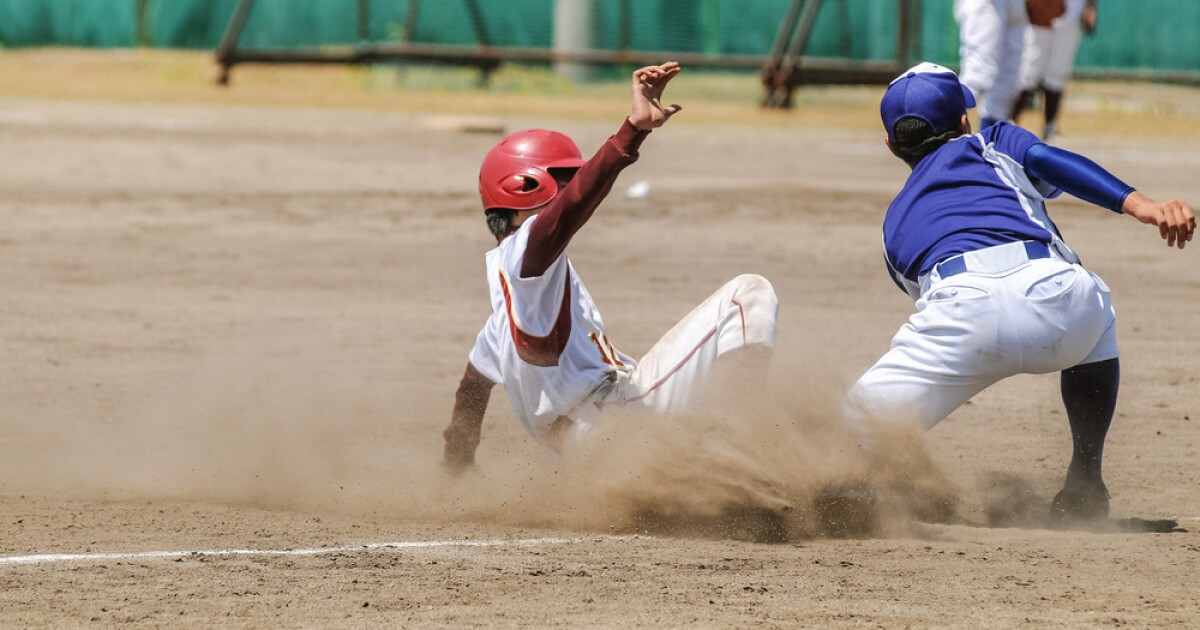
CORPUS CHRISTI, Texas — The City of Corpus Christi has finalized an agreement that allows the Oso Pony League to continue operating at the Southside Sports Complex while expanding access to more community groups. The facility, located at 1901 Paul Jones Avenue, will now serve more youth sports organizations under an affordable rental model.
Under the new License Use Agreement, nonprofit organizations can rent fields starting at $4.25 per hour or $5.25 per hour with lights. The low-cost structure aims to help youth sports groups focus on programming rather than fundraising efforts.
The city will handle facility maintenance through its Athletic Fields Maintenance Team within the Parks & Recreation Department. Fields are available for practices, tournaments and company events.
“Our goal is to remove barriers and maximize the public benefit of our city-owned assets,” Robert Dodd said.
Dodd serves as Parks and Recreation Director for the city.
“This new model ensures equitable access for all groups and prioritizes the youth sports programs that are so vital to our community’s future, all while keeping rental rates affordable,” Dodd said.
The approach mirrors the successful structure already in place at the Greenwood Sports Complex and follows best practices recommended by the National Recreation and Park Association.
Organizations interested in renting fields can find more information by visiting the city’s sports fields webpage.
For the latest local news updates, click here, or download the KRIS 6 News App.
Rec Sports
Full 2026 Championships Schedule Finalized

Colorado Springs, Colo. (December 12, 2025) – USA Ultimate confirmed today the full calendar of 2026 Championship Events. The first event of the year will be the Beach Championships, returning to Virginia Beach on May 9-10. The event, which has seen record growth the past four years, has taken place in Virginia Beach 10 of the last 11 years. The 2025 event marked the biggest USA Ultimate beach event to date, with growth across nearly all divisions.
Many other previously announced events are returning to familiar locations in 2026, with both the Masters Championships and the Youth Club Championships taking place in Aurora, CO. 2026 also marks the final year of a three year agreement to host the National Championships in San Diego, CA – which has hosted the event since 2018.
USA Ultimate has a full calendar of premier events scheduled for 2026 – in collaboration with a number of trusted local partners – offering the ultimate community opportunities to compete at the highest level across all disciplines and divisions.
The full 2026 Championship Events Schedule is listed below.
| Event | Date | Location | Venue | Local Organizer |
| USA Ultimate Beach Championships | May 9-10 | Virginia Beach, VA | Virginia Beach Oceanfront | City of Virginia Beach Sports Marketing and Resort Management LLC |
| USA Ultimate D-III College Championships | May 16-18 | Waukegan, IL | Greg Petry Sports Park | Illinois Ultimate |
| USA Ultimate D-I College Championships | May 22-25 | Rockford, IL | Mercyhealth Sportscore Two | Illinois Ultimate |
| USA Ultimate Masters Championships | July 17-20 | Aurora, CO | Aurora Sports Complex | Altitude Ultimate |
| U.S. Open & Youth Club Championships | July 31 – August 3 | Aurora, CO | Aurora Sports Complex | Altitude Ultimate |
| USA Ultimate National Championships | October 22-25 | San Diego, CA | Surf Cup Sports Park | San Diego Ultimate |
Rec Sports
Muskego Youth Sports Director faces Federal Sex Crime Charges

MUSKEGO, Wis.—Former Director of Tryouts for the Croatian Eagles Soccer Club in Franklin, Justin Kagerbauer faces federal sex crime charges.
According to federal investigators, 41-year-old Kagerbauer was caught in an undercover operation for allegedly communicating with a 9-year-old girl in the U.K. He planned to travel there to have sex with her.
In reality, the girl Kagerbauer was messaging was actually a government agent operating under the Eastern Regional Special Operations Unit.
Police and federal agents were able to find and arrest Kagerbauer at Chicago O’Hare International airport where he already had purchased a ticket to England.
According to the indictment, Kagerbauer is charged with attempted foreign travel to engage in illicit sexual conduct with a minor, using a computer to engage in unlawful sexual activity, and distributing child pornography.
If convicted of Count One, Kagerbauer faces up to thirty years’ imprisonment.
If convicted of Count Two, he faces a mandatory ten years’ imprisonment or up to life imprisonment.
If convicted of Count Three, he faces a mandatory five years’ imprisonment, up to twenty years’ imprisonment.
Kagerbauer may also face a $250,000 fine for each count. He also may be required to register as a sex offender under state and federal law.
Rec Sports
City honors Karon Lewis with first Dave Miletich Volunteer Coach of the Year Award
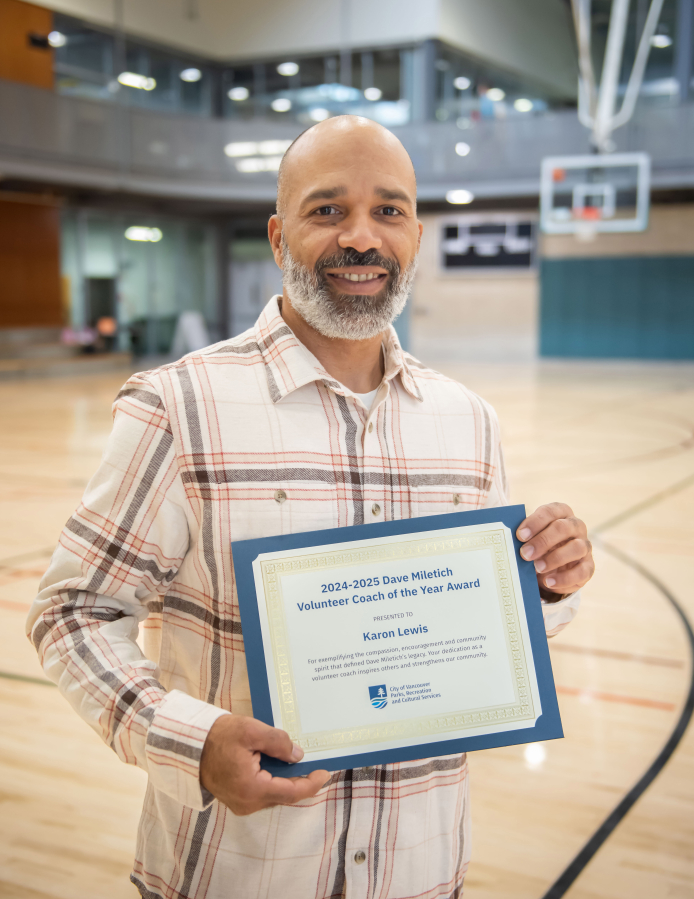
FIRCREST – Vancouver Parks, Recreation and Cultural Services has established the Dave Miletich Volunteer Coach of the Year Award and recognized Coach Karon Lewis as its first recipient.
A youth basketball coach, Lewis was recognized for his ability to inspire young athletes, teach with patience and enthusiasm, and create an environment where kids grow their skills, have fun and leave every game smiling.
The new annual award celebrates volunteer coaches who demonstrate the compassion, encouragement and community spirit that defined the late Dave Miletich, a longtime city employee and cherished mentor who died in November 2023.
Miletich served for more than 17 years as recreation manager and assistant parks and recreation director. He was instrumental in the construction of Firstenburg Community Center in 2006 and the renovation of Marshall Community Center in 2007. Beyond his professional accomplishments, Miletich was a dedicated volunteer coach for his three sons and a champion for community-based recreation.
“Our family is honored that the Volunteer Coach of the Year Award is named after Dad,” said Dave’s son, Brady Miletich. “His commitment to making youth sports fun and inclusive impacted many families directly as a coach and indirectly by the example he set. We appreciate that his legacy is being recognized and instilled in coaches today and in the future.”
The award will be presented annually to one outstanding volunteer coach. In addition to receiving a personal certificate, the winners’ names will be displayed on a plaque at Firstenburg Community Center.
-

 Rec Sports3 weeks ago
Rec Sports3 weeks agoFirst Tee Winter Registration is open
-

 Rec Sports2 weeks ago
Rec Sports2 weeks agoFargo girl, 13, dies after collapsing during school basketball game – Grand Forks Herald
-

 Motorsports3 weeks ago
Motorsports3 weeks agoCPG Brands Like Allegra Are Betting on F1 for the First Time
-

 Motorsports3 weeks ago
Motorsports3 weeks agoF1 Las Vegas: Verstappen win, Norris and Piastri DQ tighten 2025 title fight
-
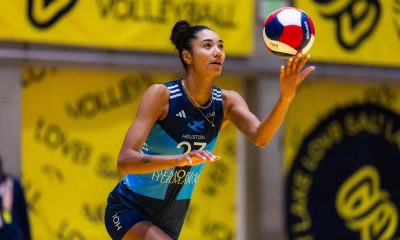
 Sports3 weeks ago
Sports3 weeks agoTwo Pro Volleyball Leagues Serve Up Plans for Minnesota Teams
-
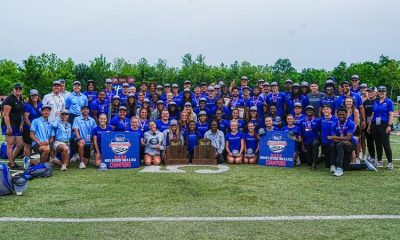
 Sports3 weeks ago
Sports3 weeks agoSycamores unveil 2026 track and field schedule
-

 Sports3 weeks ago
Sports3 weeks agoUtah State Announces 2025-26 Indoor Track & Field Schedule
-

 Motorsports2 weeks ago
Motorsports2 weeks agoRedemption Means First Pro Stock World Championship for Dallas Glenn
-
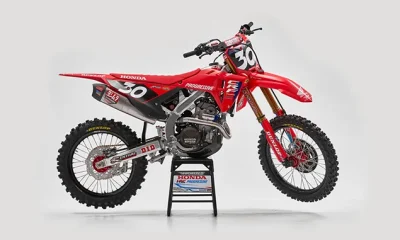
 Motorsports2 weeks ago
Motorsports2 weeks agoJo Shimoda Undergoes Back Surgery
-
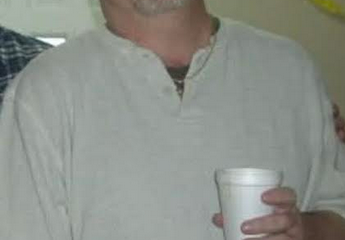
 Rec Sports2 weeks ago
Rec Sports2 weeks agoRobert “Bobby” Lewis Hardin, 56


























